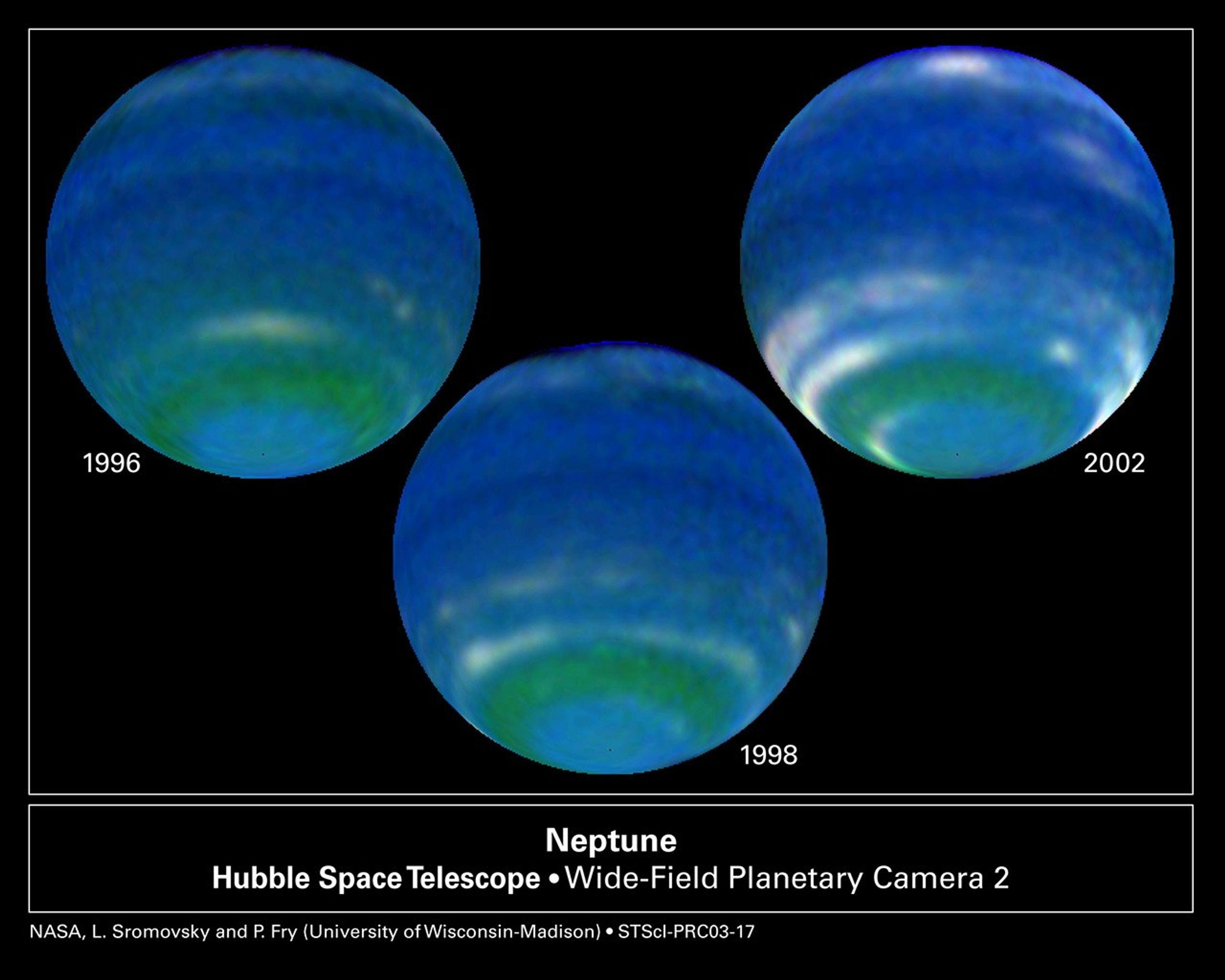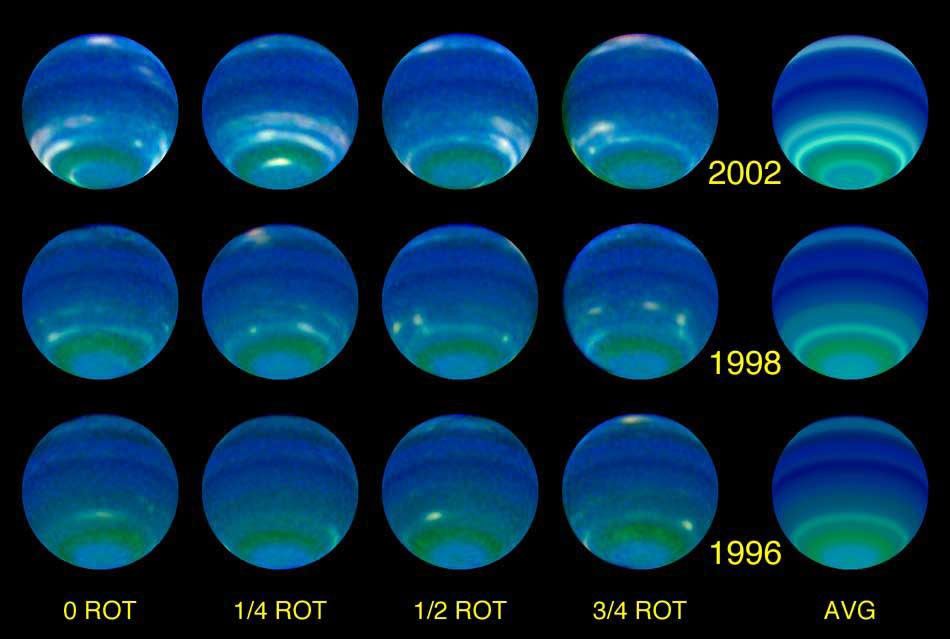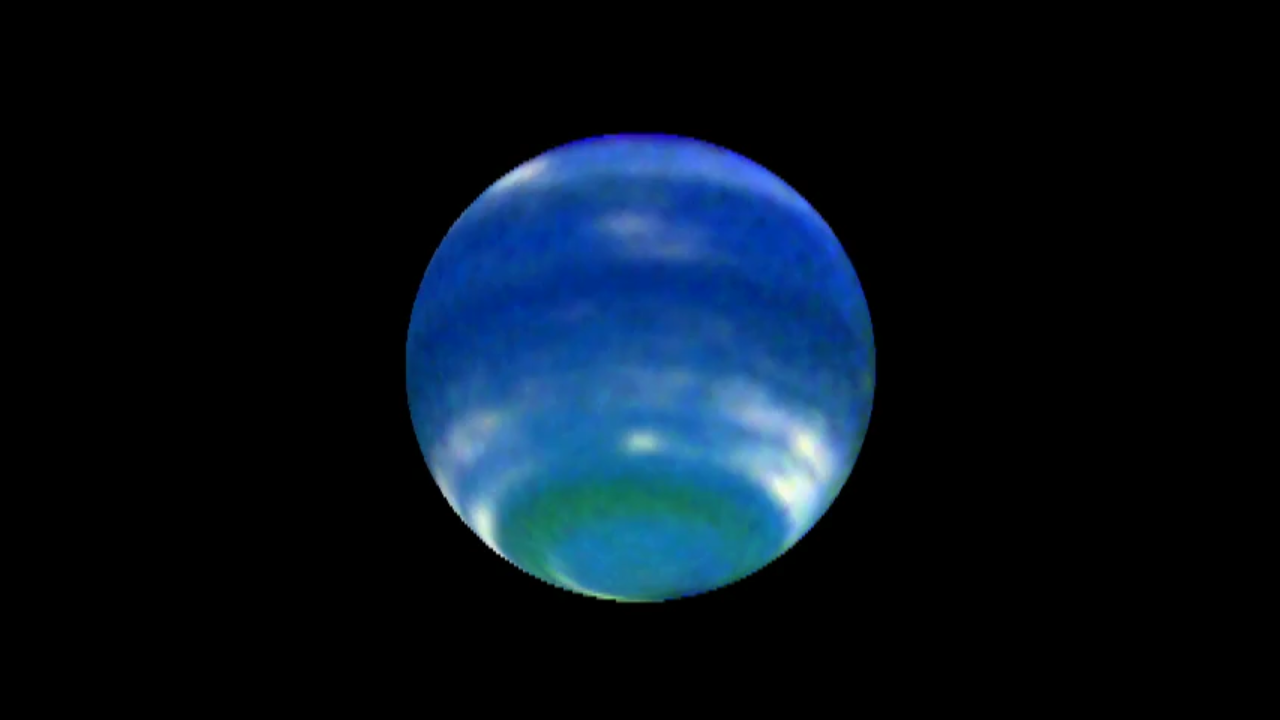1 min read
Springtime on Neptune: Increased Brightness Shows Seasonal Change

NASA Hubble Space Telescope observations in August 2002 show that Neptune's brightness has increased significantly since 1996. The rise is due to an increase in the amount of clouds observed in the planet's southern hemisphere. These increases may be due to seasonal changes caused by a variation in solar heating. Because Neptune's rotation axis is inclined 29 degrees to its orbital plane, it is subject to seasonal solar heating during its 164.8-year orbit of the Sun. This seasonal variation is 900 times smaller than experienced by Earth because Neptune is much farther from the Sun. The rate of seasonal change also is much slower because Neptune takes 165 years to orbit the Sun. So, springtime in the southern hemisphere will last for several decades! Remarkably, this is evidence that Neptune is responding to the weak radiation from the Sun. These images were taken in visible and near-infrared light by Hubble's Wide Field and Planetary Camera 2.
About the Object
- DistanceDistanceThe physical distance from Earth to the astronomical object. Distances within our solar system are usually measured in Astronomical Units (AU). Distances between stars are usually measured in light-years. Interstellar distances can also be measured in parsecs.The semi-major axis of Neptune's orbit about the Sun is 30.06 Astronomical Units (A.U.) or roughly 4.5 billion km.
- DimensionsDimensionsThe physical size of the object or the apparent angle it subtends on the sky.The planet has a diameter of roughly 30,800 miles (49,600 km) at the equator.
About the Data
- Data DescriptionData DescriptionProposal: A description of the observations, their scientific justification, and the links to the data available in the science archive.
Science Team: The astronomers who planned the observations and analyzed the data. "PI" refers to the Principal Investigator.These data are from HST proposals 6650, 7324 and 9393. The science team includes: L. A. Sromovsky, P. M. Fry, and S. S. Limaye (University of Wisconsin-Madison's Space Science and Engineering Center), and K. Baines (JPL).
- InstrumentInstrumentThe science instrument used to produce the data.HST>WFPC2
- Exposure DatesExposure DatesThe date(s) that the telescope made its observations and the total exposure time.August 13-14, 1996; August 11-12, 1998, and August 9-10, 2002
- FiltersFiltersThe camera filters that were used in the science observations.F467M (Strömgren b), F673N ([S II]), and F850LP (9650Å)
- Object NameObject NameA name or catalog number that astronomers use to identify an astronomical object.Neptune
- Object DescriptionObject DescriptionThe type of astronomical object.Planet
- Release DateMay 15, 2003
- Science ReleaseBrighter Neptune Suggests a Planetary Change of Seasons
- CreditNASA, L. Sromovsky, and P. Fry (University of Wisconsin-Madison)
Related Images & Videos

Several Faces of the Planet Neptune at Each Epoch: 1996, 1998 and 2002
These individual color composite images used Hubble blue, green and red filters. Each image component was also processed to reduce limb darkening and enhance contrast, and is a blend of several images taken at different longitudes. The images for each year were processed the...
Share
Details
Last Updated
Aug 17, 2025
Contact
Media
Claire Andreoli
NASA’s Goddard Space Flight Center
Greenbelt, Maryland
claire.andreoli@nasa.gov

































